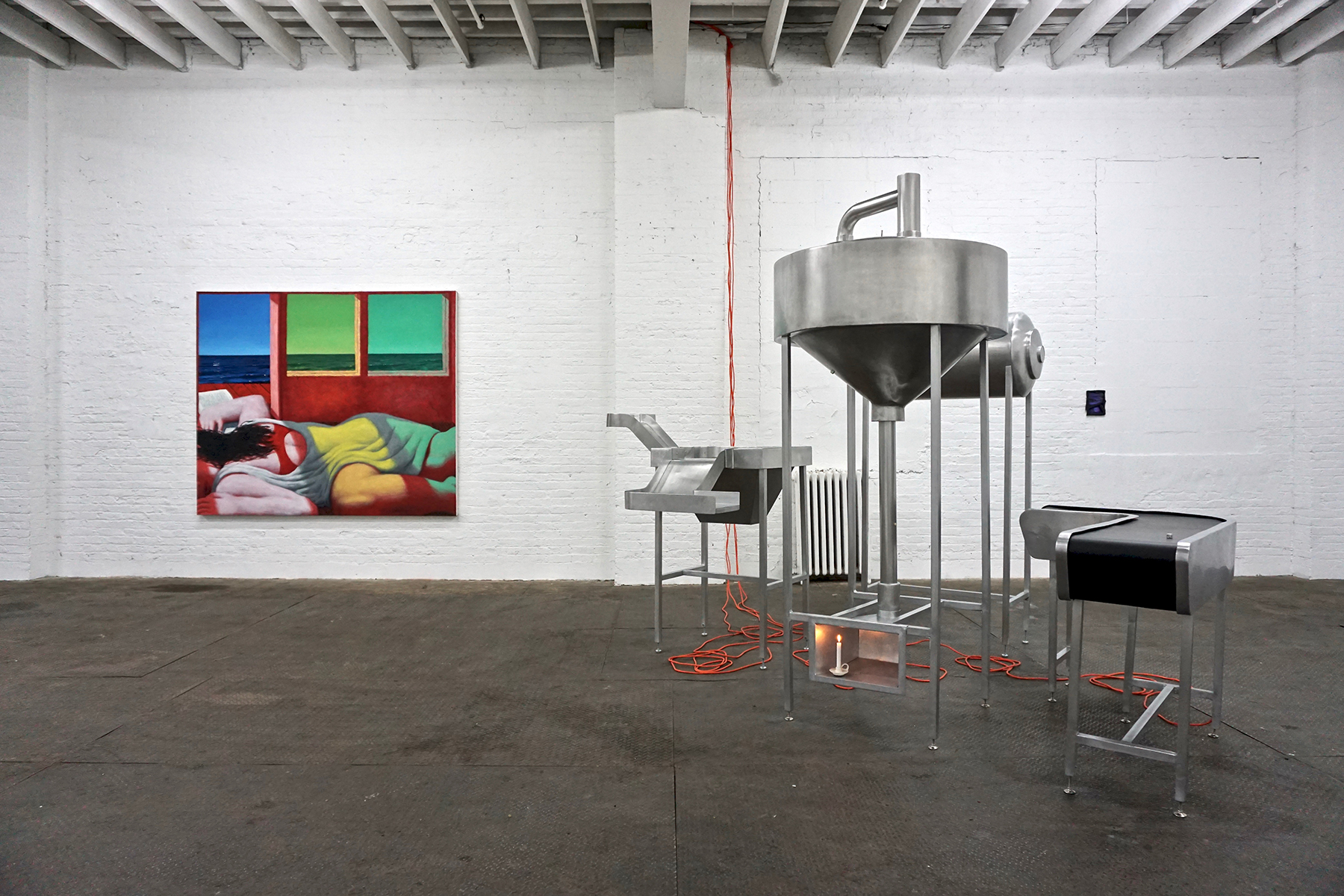[ad_1]
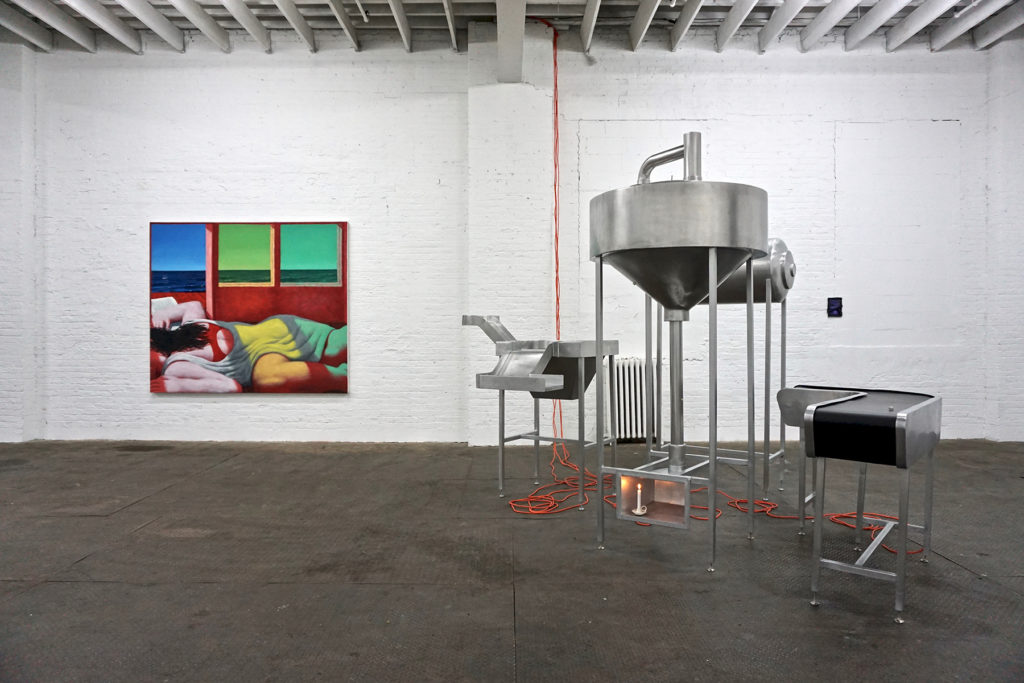
Installation view of “The Mark Inside” at Signal in Bushwick, with works by Jordan Kasey and Kristin Walsh pictured.
COURTESY SIGNAL
Let’s start with the bad news about 2018 in art in New York: the city lost some of its best galleries, with Real Fine Arts, Signal, and Cleopatra’s among those closing shop. The mood is uncertain and unsettled, with many dealers decamping for new neighborhoods and rumors of more closures circulating. The stock market is tanking, a recession looms, and the city is becoming increasingly expensive, with income disparity continuing to widen. The high cost of doing business means that certain ideas are most definitely being squeezed out.
And yet, many enterprising artists and dealers and curators have been finding ways to persist, and they made the past 360-odd days exhilarating for anyone who follows culture in New York. I say some variation of this every time I write my year-end recap, but this town, even on its worst days, is a luxurious smorgasbord, a feast without parallel, for people who love art. We’re lucky to live here, at this moment.
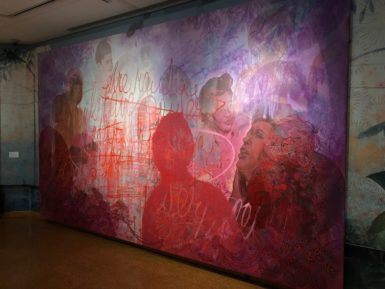
Installation view of “Firelei Báez: Joy Out of Fire,” at the Schomburg Center for Research in Black Culture, presented with the Studio Museum in Harlem.
PHOTOS: ANDREW RUSSETH/ARTNEWS, EXCEPT WHERE NOTED
Where does one begin when cataloguing our good fortune this year? A few items to get things started: the Milton Resnick and Pat Passlof Foundation and the Swiss Institute opened handsome new venues; Performance Space New York reopened with renewed vigor after a renovation; Camille Henrot gave the New York premiere of her invigorating 3D film Saturday (2017) at the Museum of Modern Art; the Wallach Art Gallery at Columbia University presented the illuminating “Posing Modernity: The Black Model from Manet and Matisse to Today”; B. Wurtz made his public-art debut with charming totems built from colanders and fake fruit in City Hall Park; and the Studio Museum began work on an ambitious expansion while presenting unmissable shows by Firelei Báez and Maren Hassinger around Harlem.
This was also the year of grand museum retrospectives—Andy Warhol and Grant Wood at the Whitney, Adrian Piper and Bruce Nauman at the Museum of Modern Art and MoMA PS1, Sarah Lucas at the New Museum, Danh Vo and Hilma af Klint at the Guggenheim, and Eugène Delacroix at the Metropolitan Museum of Art, to name just eight. One can quibble with the execution of those shows (the Lucas layout being a touch formulaic, say), but only the most churlish would complain about a lineup like that.
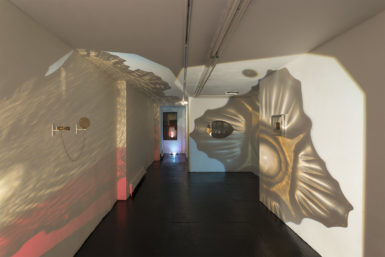
Installation view of “Hayley Silverman: Entering Heaven Alive” at Bodega.
COURTESY BODEGA
On the gallery front, there was also no shortage of thrilling affairs, and doing a comprehensive recap would require more words than can be fit here. (Back in September, I tried to do that for a full season.) But a few things that have stuck with me include Paul McMahon’s oblique survey at 9 Herkimer Place, the irresistible little drawings Jeanette Mundt showed at Bridget Donahue, Cici Wu’s beautiful out-of-left-field installation at 47 Canal, Hayley Silverman’s spectral wonders at Bodega, Klara Lidén’s captivating city walk at Reena Spaulings, Pati Hill’s melancholic photocopies at Essex Street, Alex Da Corte’s neon-infused blockbuster at Karma (plus his jaw-dropping contribution to the Carnegie International), the gut-punching group show “Putting Out” at Gavin Brown’s Enterprise, Robert Gober’s doubleheader at Matthew Marks, and Arthur Jafa’s masterful display, also at GBE (his new video at the Berkeley Art Museum and Pacific Film Archive, The White Album, is also looking like a defining document of the present moment.) Also still lingering are Jamian Juliano-Villani’s exquisite new paintings at JTT, Joe Overstreet’s explosive canvases at Firestone Loft, Robert Bittbender’s latest unruly assemblages at Lomex, and three masterwork-heavy blowouts: Ed Clark at Mnuchin, Cy Twombly at Gagosian, and Domenico Gnoli at Luxembourg & Dayan.
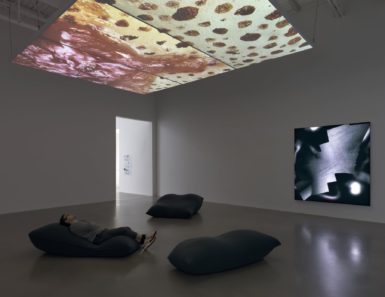
Installation view of “Seth Price: Hell Has Everything” at Petzel.
COURTESY PETZEL
The weirdest shows of the year? I’d suggest two for that high praise. One is Seth Price’s bizarre, alluring stand at Petzel (on view for a few more days!), which seems to be vaguely about texture and appearances, and how people are tracked and defined—but really I have no idea why it feels like such an exacting depiction of life in New York right now. The other was at Metro Pictures, where the German artist Andreas Slominski’s portable-toilet sculptures finally made their way Stateside, in all of their mirthful libidinal glory.
Finally, this was a year of stellar performances: Rainer Ganahl channeling Trump and Ubu Roi at an uptown funeral home, Georgia Sagri turning a dinner party into an unhinged zone of psychological purging at the Emily Harvey Foundation, Richard Maxwell scripted a fractured portrait of the United States at Greene Naftali, Abraham Cruzvillegas and Bárbara Foulkes presenting a piece about balance and perseverance at the Kitchen (reprised at Miami Basel), Madeline Hollander’s gallant team of dancers building up heat at the Artist’s Institute, and—last but not least—Alexandra Bachzetsis putting in a star turn on the High Line as she changed outfits, exercised, and sang while holding nothing; on the evening I saw her, she filled a dark, rainy night with heat and light.
And now, a top 10 from all over.
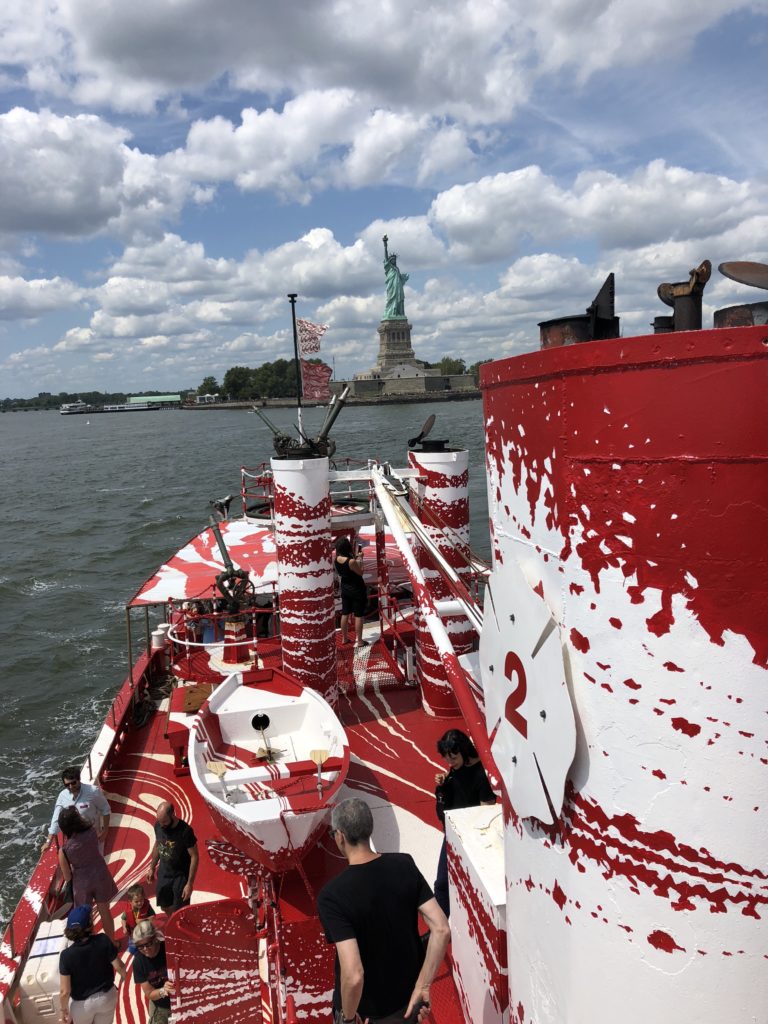
Aboard the Fireboat John J Harvey, painted by Tauba Auerbach, on July 29, near the Statue of Liberty in New York.
10. Tauba Auerbach’s Flow Separation aboard the Fireboat John J. Harvey, New York
To mark the centenary of the end of World War I, Op art master Tauba Auerbach painted the Fireboat John J. Harvey in a scintillating red-and-white pattern inspired by historical dazzle camouflage for a project with the Public Art Fund, turning the vessel into an eye-popping artwork that provides free rides along New York’s waterways. Riding aboard the ship may have been the most fun I had all year, seeing the city anew and answering the waves of people along the shores who marveled at her creation. It was an art of extreme generosity, a gift to the city that runs into May 2019.
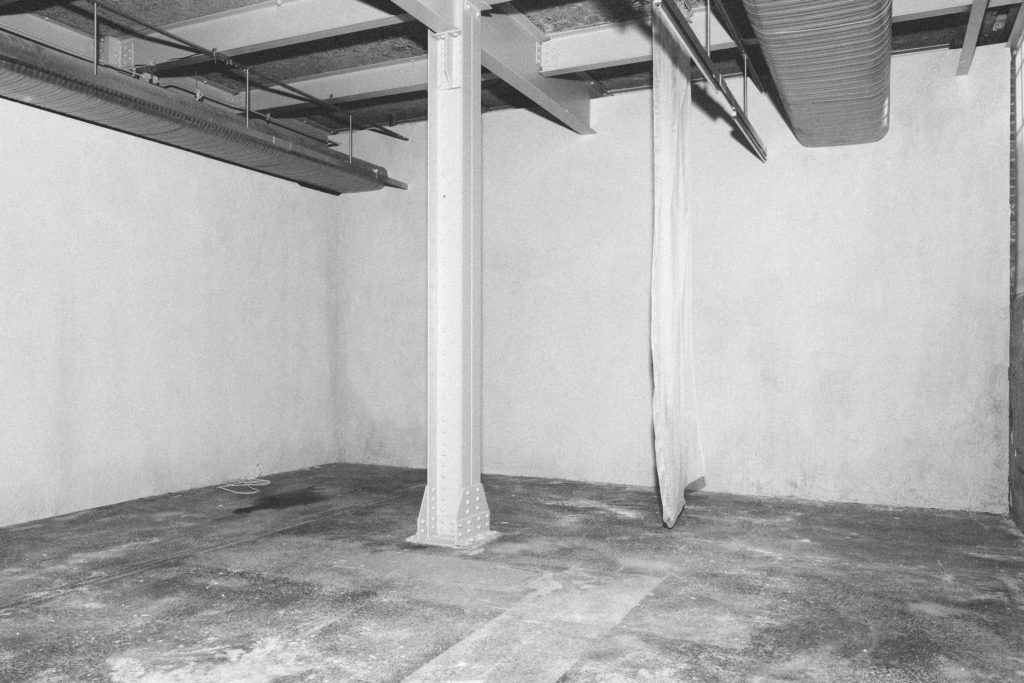
Installation view of “Adam Gordon: The Grey Room” at the Power Station in Dallas.
COURTESY THE ARTIST AND THE POWER STATION
9. “Adam Gordon: The Grey Room” at the Power Station, Dallas
Risks: some artists take them, most do not. The Detroit-based Adam Gordon takes quite a lot of them, and seems to be walking a tightrope high in the sky, miraculously managing to create fascinating environments and situations that just avoid becoming theatrical or overwrought. For his complete takeover of the Power Station, he blacked out one room, inserted peculiar scents into various spaces, and made who knows how many other barely noticeable alterations, crafting an installation that was part dungeon, part abandoned warehouse, and part haunted home. It instilled fear from emptiness, conjuring a kind of great, sublime void. I can’t wait to see what he does next.
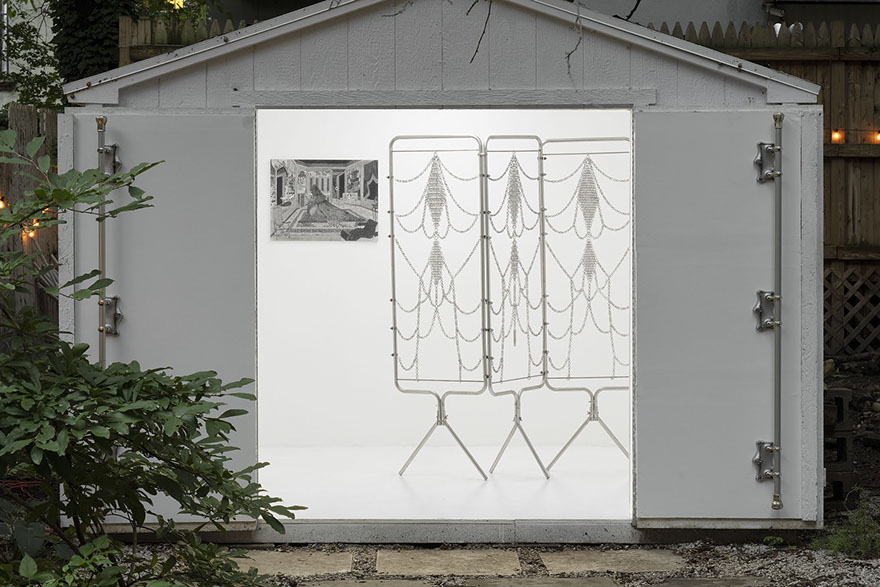
Installation view of “Poor Thing: Kyung Me + Sydney Shen” at Hotel Art Pavilion, Brooklyn.
COURTESY HOTEL ART PAVILION
8. Micro Economies and Fly-by-Night Spaces
I’m stealing this point from my friend Jamie Sterns, but it’s been inspiring to see artists and other art types experiment with all sorts of side projects—DIY fashion affairs, makeshift restaurants, and scrappy publications. I’ve been quoting the band the Desperate Bicycles too much recently, but as they put once put it, there’s “no more time for spectating.” People are building the world they want, and just off the top of my head I’d mention the delicious dinner series known as Giovanni’s, Hotel Art Pavilion (which started out doing shows in borrowed spaces and now operates out of a little shed in Brooklyn), the jewelry line Gesualda, North Dumpling (a bulletin-board gallery in the superb Lower East Side/Chinatown resto of the same name), and Re: Art Show, which has put together exhibitions in various rooms of the old Pfizer building in Bed-Stuy.
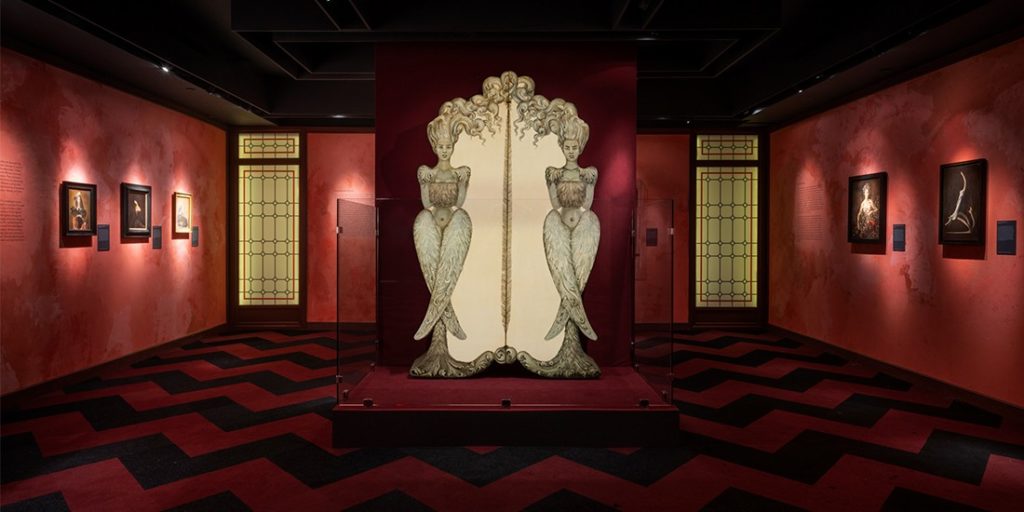
Installation view of “Leonor Fini: Theatre of Desire, 1930–1990″ at the Museum of Sex, New York.
COURTESY MUSEUM OF SEX
7. “Leonor Fini: Theatre of Desire, 1930–1990″ at the Museum of Sex, New York
Fans of outré anime! Fans of Lisa Yuskavage! Fans of lives lived as art, in fantasy and luxury! Leonor Fini is your artist, and this retrospective should be your home until it closes in March 2019. Fini spent the 20th century, which her life spanned almost entirely, making erotic drawings and paintings filled with surreal imagery and power struggles, and wearing exuberant costumes of her own design. Packed with the full range of her work, this show, curated by Lissa Rivera, should provide Fini a secure place in the canon of modern art, of Surrealism (a movement she resisted being subsumed into, it must be said), and of artists willing to go their own way.

Installation view of Louise Lawler’s Corner (1980) in “Edits and Projections” at 80WSE, New York.
6. “Edits and Projections” at 80WSE, New York
This mysterious exhibition from Rhea Anastas, Louise Lawler, and Robert Snowden was open only from 5 to 9 p.m., four days a week, and there was no gallery lighting—meaning that one viewed Lawler’s gimlet-eyed photographs and projections of works by Jeff Koons, Gerhard Richter, Cindy Sherman, and others in darkness, the rooms punctuated only with glows from security systems, exit signs, and projectors. A gambit that might sound gimmicky was instead deeply effective, making the space seem at once intimate, unreal, mournful, and somehow more closely tied to the night falling outside—it was a place for solace in dark times.
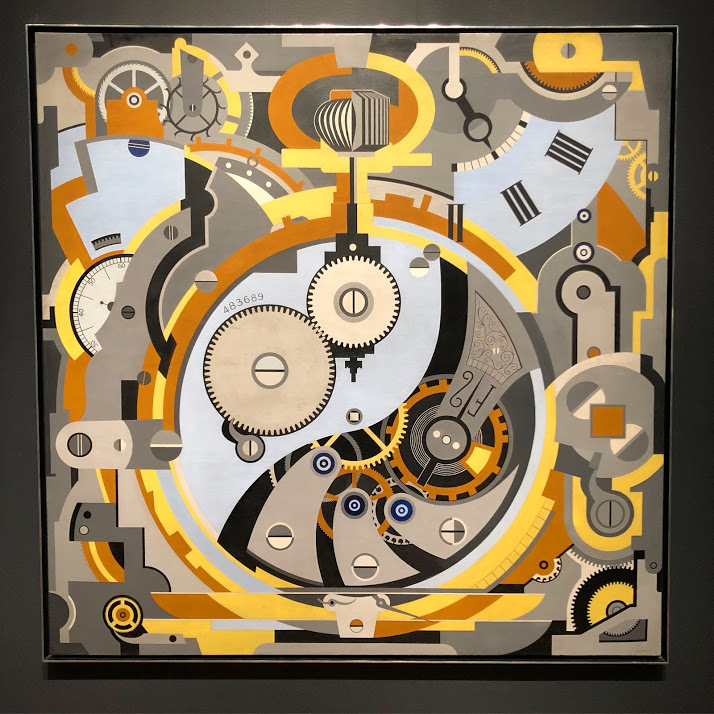
Gerald Murphy, Watch, 1925, in “Cult of the Machine” at the de Young Museum in San Francisco.
5. “Cult of the Machine” at the de Young, San Francisco
The fact that this blockbuster show about Precisionism, the first homegrown avant-garde movement in the United States, is not traveling to New York remains nothing short of criminal. Cornerstones of American modernism like Charles Sheeler, Georgia O’Keeffe, and Charles Demuth hang alongside slightly lesser-known figures like Elsie Driggs, Francis Criss, and Ralston Crawford, accompanied by design objects and even a 1937 Cord Phaeton automobile that is the slickest car I have ever seen. Beginning in the 1920s and ‘30s, these artists captured the rise of a new empire in all of its giddy, naive optimism, while also noting certain bleak undercurrents, like smoke stacks and propeller engines, highlighting the environmental degradation and war that would also be hallmarks of the American Century. Curated by Emma Acker, it’s an important exhibition, and it’s on view at the Dallas Museum of Art for a few more days.
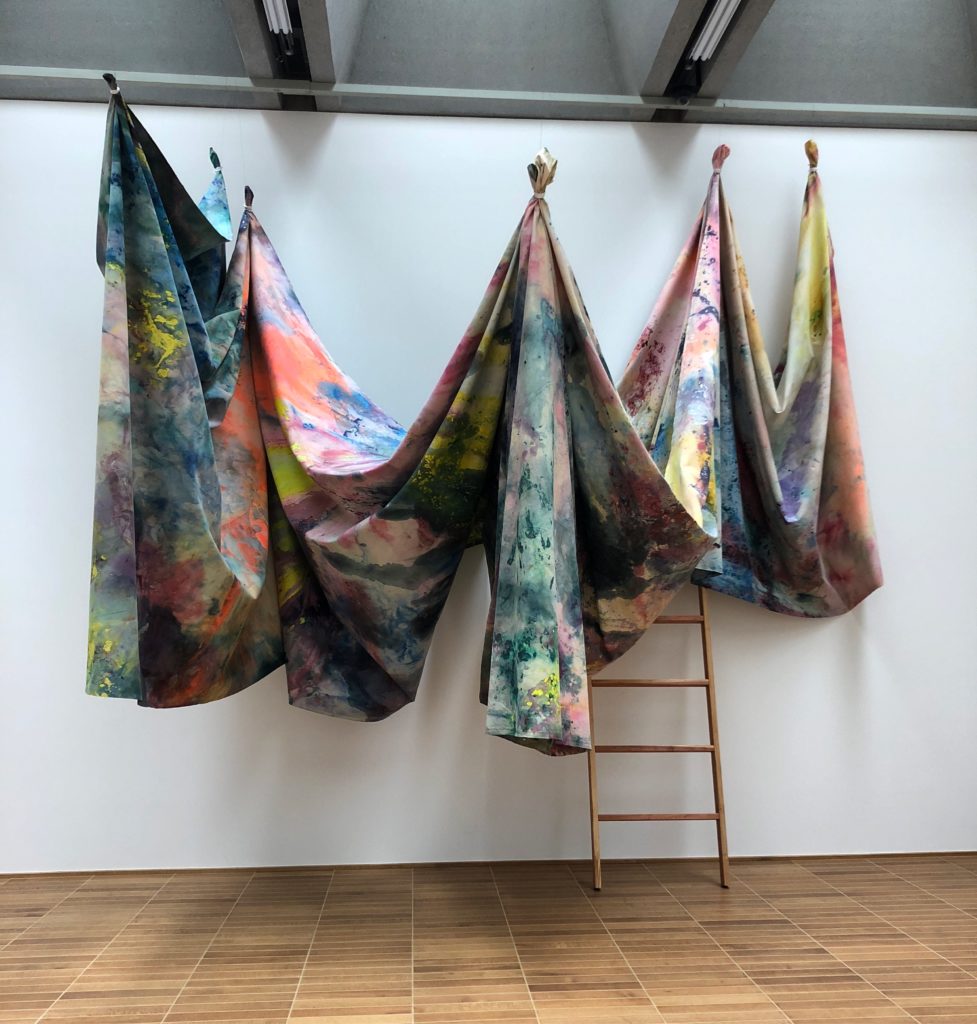
Sam Gilliam, Carousel Form II, 1969, in “Sam Gilliam: The Music of Color, 1967–73” at the Kunstmuseum Basel, Switzerland.
4. “Sam Gilliam: The Music of Color, 1967–73” at the Kunstmuseum Basel, Switzerland
This show of unrepentantly exuberant paintings, exactingly curated by Jonathan Binstock and Josef Helfenstein, confirmed that, from the late 1960s to the early ’70s, Sam Gilliam was the most adventurous, talented artist working in the Color Field mode. Staining canvases in a panoply of hot colors and draping, folding, and mounting them in various ingenious ways, he blew open the borders of what was possible with an abstract painting, clearing paths that artists generations younger are only now fully exploring.
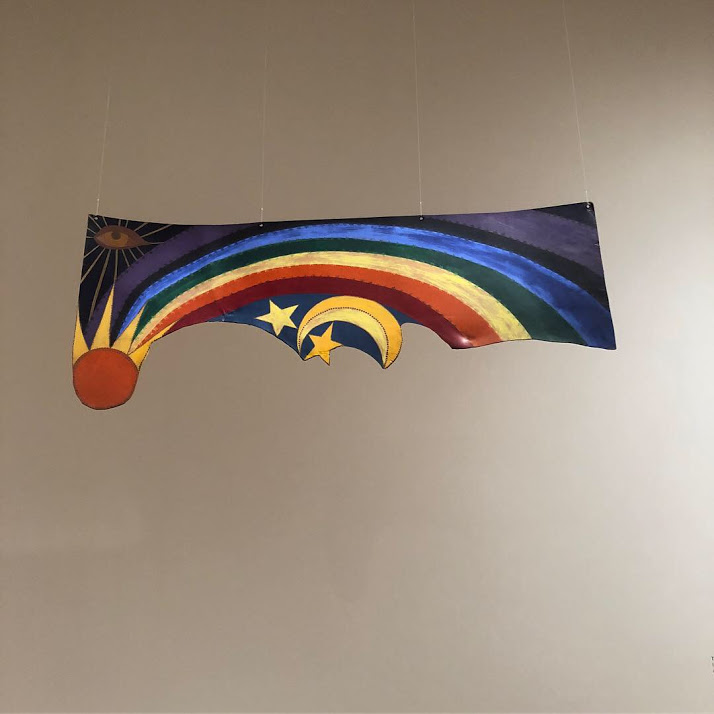
Betye Saar, Rainbow Mojo, 1972, in “Soul of a Nation” at the Brooklyn Museum.
3. “Soul of a Nation: Art in the Age of Black Power” at the Brooklyn Museum
After stops in London and Bentonville, Arkansas, this essential exhibition finally landed in Brooklyn, providing an expansive, potent, and gem-filled look at work that black artists were making in the U.S. between 1963 and 1983. The next step, of course, is for the presenting institutions, and so many more, to start building on the work done by the show’s curators, Mark Godfrey and Zoe Whitley, with Ashley James at its Kings County edition—focusing on other decades, diving deeper into groups and movements teased here, and doing solo shows with artists the exhibition featured. (Already I can’t wait for the Brooklyn Museum’s 2020 Lorraine O’Grady retrospective.) They need, in short, to put their money where their mouths have been.
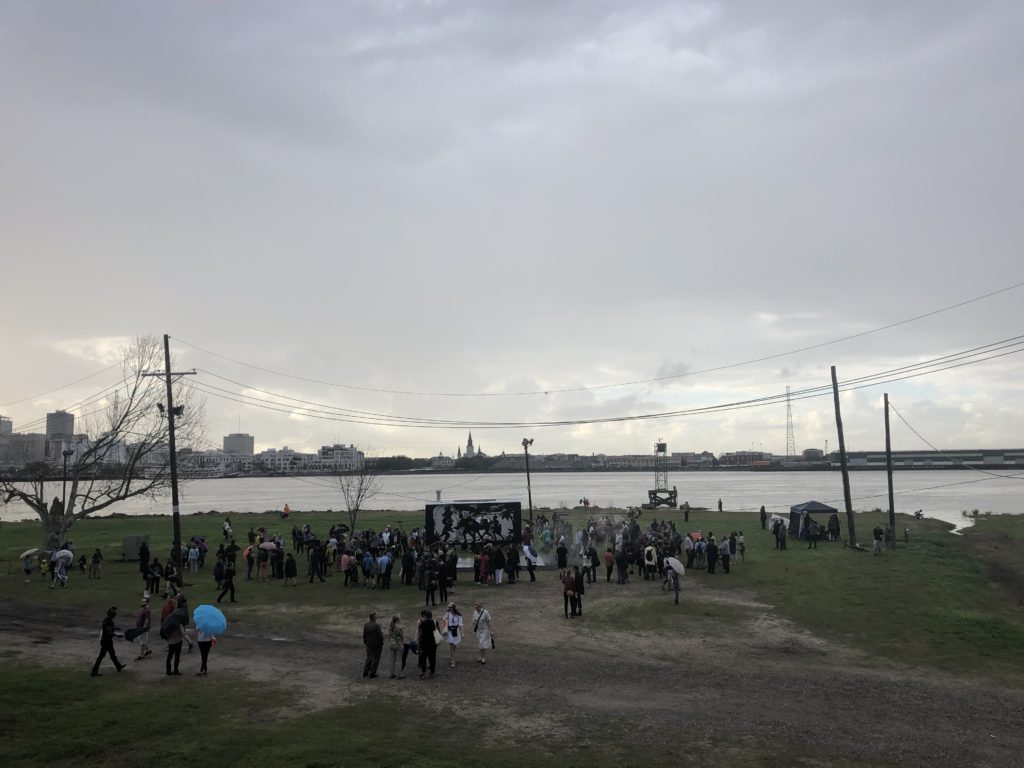
Kara Walker’s Katastwóf Karavan 2018, at Algiers Point in New Orleans on February 23.
2. Kara Walker’s Katastwóf Karavan, 2018 at Prospect 4, New Orleans
One of my big regrets of 2017 was not going to the opening of the Trevor Schoonmaker–curated Prospect 4, but I did make it for the closing weekend in February of this year, when Kara Walker’s Katastwóf Karavan—a fully functioning steam calliope in a steel chassis adorned with her trademark imagery—was unveiled at Algiers Point, a site across the Mississippi River from the French Quarter that was once a slave market. In the pouring rain, Jason Moran played songs of black liberation—spirituals, Jimi Hendrix’s “Freedom,” Jimmy Cliff’s “Many Rivers to Cross.”—as ships cruised along the water, occasionally adding their own noise as disparate strands of history came momentarily together in one place. Walker’s Karavan was an exegesis on how people and traditions can be preserved amid generations of trauma, and on how art can create enduring communities. Months later, her work, and its title, would come to take on painful new resonance.
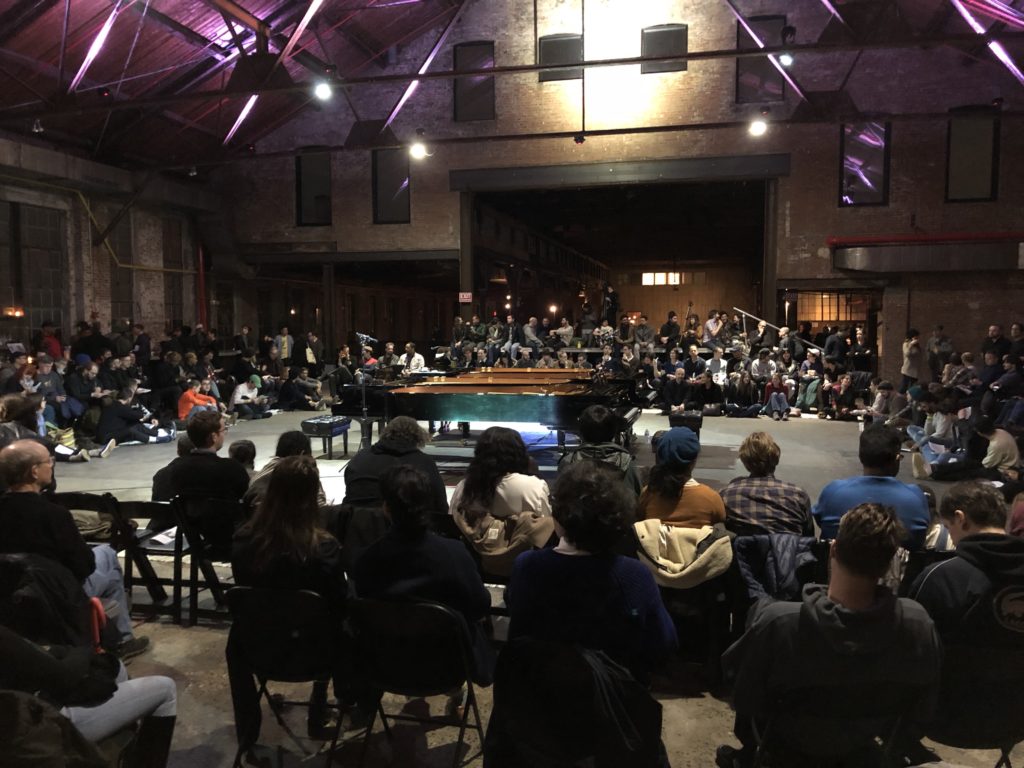
The Knockdown Center in Queens on January 23, when works by Julius Eastman were performed as part of “That Which Is Fundamental.”
1. “That Which Is Fundamental” at the Kitchen and Elsewhere, New York
Over a number of weeks, curators Tiona Nekkia McClodden and Dustin Hurt oversaw a series of performances of the unflinching music of the Post-Minimalist composer Julius Eastman, whose work has been sidelined, and in some cases lost, in the decades since his death of a heart attack in 1990 at the age of 49. Alongside concerts at various venues, they presented an exhibition of archival materials and another of contemporary art paying tribute to the master. Sustained, multi-platform festivals like this are why we live in New York, and why institutions like the Kitchen need to be supported, particularly at a time when so much cultural philanthropy is flowing to absurd boondoggles rather than vanguard art. The mounting at the Knockdown Center in Queens of Eastman’s Crazy Nigger (1979), a hard-charging piece for four pianos that ends in rapturous waves of sound, remains, for me, the most startling, indelible moment of 2018.
[ad_2]
Source link

